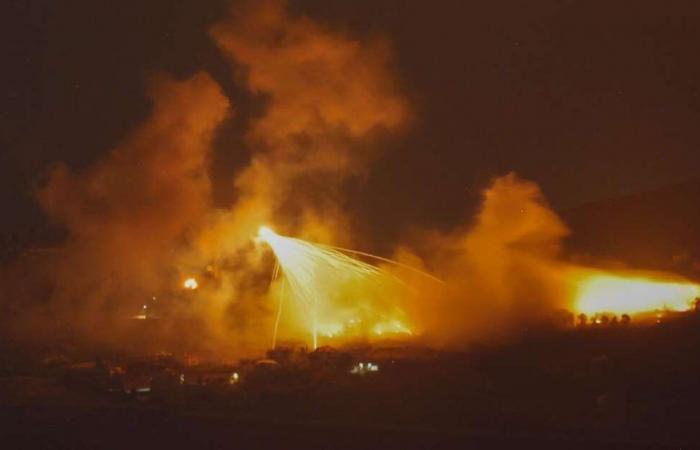It is 6:30 p.m. in the Lebanese capital. The southern suburbs of Beirut have just been hit by the largest Israeli strike since the 2006 war. The city’s residents are still trembling at the sound of the explosives. The number of deaths is unknown, it is a question of “massacre”. Yet another tragedy? Perhaps the start of a regional war. The craziest rumor is circulating: the secretary general of Hezbollah has lost his life.
The next morning, the news seemed to be confirmed. The unimaginable happened. Hassan Nasrallah is dead, the Israeli army announced shortly after 11 a.m. The rest, no one knows. The disappearance of the myth plunges the country and the region into the unknown. But a page is turning this evening.
Fewer and fewer Lebanese believed in it
By taking the leadership of the party thirty-two years ago, then by leading the only armed force perceived as capable of containing the Israeli enemy, he had become the face of the “resistance”. With the liberation of southern Lebanon in 2000, then the war of July 2006, the man had built a little legend around his name. At once a military leader, political leader and charismatic icon, he was described as a new Nasser.
Nearly a year after Hamas’s triple offensive in Israel, the image of saidyed [titre religieux chiite] has, however, been put to the test for months already. Military setbacks, security failures, the human cost of the war and the lack of a clear strategy give the impression of an outdated organization on the verge of defeat. From one speech to another, Hassan Nasrallah tries to save the furniture through victorious rhetoric which puts losses into perspective and highlights tactical gains. But fewer and fewer Lebanese believe it.
Especially since the sequence comes at the end of a trying decade. The multiple crises, the military intervention in Syria, the financial scandals, the double explosion at the port of Beirut and the internal power grabs have eroded the sympathy capital of Hassan Nasrallah’s party. If the leader continues to give the pulse through his televised speeches followed from one end of the planet to the other, he no longer has a consensus, even within the Shiite community.
A growing portion of Lebanese refuses the warmongering of those who threaten at regular intervals to place the country on the edge of the precipice. But the image he woven, that of an outstanding strategist, had until then survived the elements. In 2011, the leader appeared in the magazine’s list Time of the 100 most influential people in the world. Adored or abhorred, it is one of the region’s must-see attractions.
For months, the country and the region tried to anticipate his actions. How far will he go? Is he ready to embark on a conflict that promises to be more violent and more uncertain than all the others? We won’t know. For the said, the new October war will be one too many, the one which deconstructs the myth created by all the others.
Political awakening and religious fervor
At the beginning was the Lebanese civil war. The childhood and adolescence of saidyed are punctuated by this conflict, which part of the Shiite community considers does not concern them. Young Hassan was not yet 15 when hostilities broke out. The Nasrallahs live in Nabaa, a working-class neighborhood in the eastern suburbs of Beirut affected by security incidents even before the official start of the clashes. The household had to flee for the first time in 1974, then again in 1975, when Christian militias expelled the Muslim inhabitants of the Sin El-Fil region, where the family had found refuge a year earlier. This time she settled in the South, in the small village of Al-Bazouryieh, near Tyre, where her father, Abdel Karim, came from.
The first years of the war were mainly those of political awakening. As a teenager, Hassan Nasrallah sided with Shiite clerics close to Iranian revolutionaries, opposed to left-wing secular forces, both Lebanese and Palestinian. In Al-Bazouryieh, the latter “were very strong […]there were no devout believers […]my main interest therefore revolved around the formation of such a group of young religious”, he will tell [au quotidien libanais] Nida Al-Watan in 1993.
The young man’s entourage is not oriented towards public affairs, nor particularly devout. On the other hand, it is imbued with a Shiite culture rocked by a feeling of exclusion and injustice. Moussa Sadr is then the spokesperson for a historically marginalized community. Hassan Nasrallah confided years later to having meditated for long hours in front of the portrait of the imam enthroned at the entrance to his father’s store. “I dreamed of becoming like him”, he will say in an interview published by the Iranian weekly Ya Lesarat Al-Hoseyn on August 2, 2006.
Hassan Nasrallah joined the ranks of Amal in 1975. Founded some time earlier by Moussa Sadr in the wake of the Movement of the Disinherited, the party defines itself as a Lebanese group carrying this emerging Shiite consciousness but also religious. A crucial element for the young man, who showed early religious fervor, traveling miles on foot to pray in a mosque or to find second-hand books.
A meteoric rise
The Israeli invasion of 1982 marked a turning point in the life of the community and the man. While Nabih Berry, leader of the party since 1980, chose to participate in the national salvation committee alongside Bachir Gemayel, a branch of the partisan apparatus led by Hussein Al-Moussaoui seceded to found, with the support of the Islamic Republic of Iran, what would become Hezbollah two years later. From July, Hassan Nasrallah integrates “the first cohort of young Shiites trained at the camp






